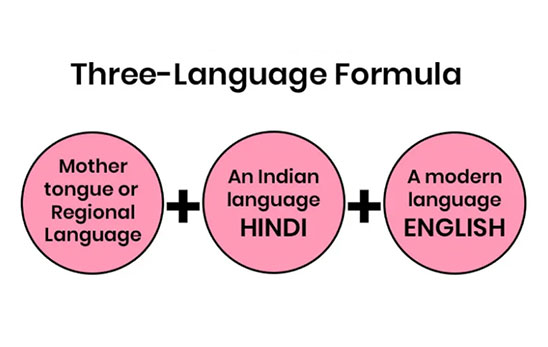What Does NEP 2020 State About Languages?
Why in News?
Tamil Nadu’s continued resistance to the adoption of the three-language policy, as mandated under the National Education Policy (NEP) 2020, has brought the longstanding language debate in India into the spotlight again. 
Introduction
The National Education Policy (NEP) 2020 is India’s new education roadmap after decades. One of its key features focuses on language instruction in schools, emphasizing the importance of using the mother tongue or regional language in the early years of schooling. This move is based on the understanding that children learn and comprehend best in their native languages.
Key Features
-
Medium of Instruction in NEP 2020
- NEP 2020 replaces the earlier education policy of 1986.
- It states that, wherever possible, the medium of instruction for students in both public and private schools should be in the home language or mother tongue, at least until Grade 5, and preferably up to Grade 8 and beyond.
- Beyond Grade 8, the local or home language will continue to be taught as a language wherever possible.
-
Educational Benefits Highlighted
- The NEP emphasizes the cognitive benefits of multilingualism.
- Children exposed to multiple languages early develop better cognitive skills.
- The policy stresses foundational learning in the mother tongue before introducing other languages.
-
Classical and Regional Languages
- NEP 2020 recommends that classical Indian languages, such as Tamil, Telugu, Kannada, Malayalam, Odia, and also Pali, Persian, and Prakrit, should be available as options.
- To promote learning in mother tongues, high-quality textbooks in science and other subjects will be made available in regional languages.
- The NCERT plans to release digital books in 100 regional languages and dialects by 2024.
Specific Impacts or Effects
-
Findings from the 8th All India School Education Survey (AISES)
- Conducted by NCERT, this survey found that the use of the mother tongue as a medium of instruction has increased in primary schools.
- From 2002 to 2009, there was a significant rise in schools teaching in the mother tongue at the primary stage, from 69% to 92.97%.
- At the upper primary level, this figure stands at 87.56%.
- However, English is still the dominant medium in urban areas, with 80.99% of schools using English for instruction.
-
State-Wise Variations and Resistance
- Tamil Nadu has rejected the three-language formula, following its earlier stance.
- In Haryana, Tamil was removed from its status as a second language in 1969.
- Himachal Pradesh has been unable to offer Tamil and other language options due to a lack of demand and resources.
Challenges and the Way Forward
Challenges:
- Poor implementation of the three-language policy in several states.
- Resistance from states like Tamil Nadu, which prefer the two-language formula.
- Lack of resources to teach less-demanded languages.
Steps Forward:
- Continued efforts by NCERT and SCERTs to translate textbooks and educational content into regional languages.
- Promoting multilingual education beyond policy and addressing state-specific concerns.
- Expanding options for foreign language education in schools.
What About Foreign Languages?
- NEP 2020 allows students to study foreign languages like Korean, Japanese, Thai, French, German, Spanish, Portuguese, and Russian at the secondary level.
- The Central Board of Secondary Education (CBSE) allows students to learn two Indian languages until Class 10.
- Foreign languages can be studied as a third language or an elective.
Conclusion
The NEP 2020 places a strong emphasis on using regional and mother tongue languages in education. However, its implementation, especially the three-language policy, has faced mixed responses across states. The policy aims to promote multilingualism, cultural understanding, and cognitive development, but success will depend on effective execution and cooperation from individual states.








